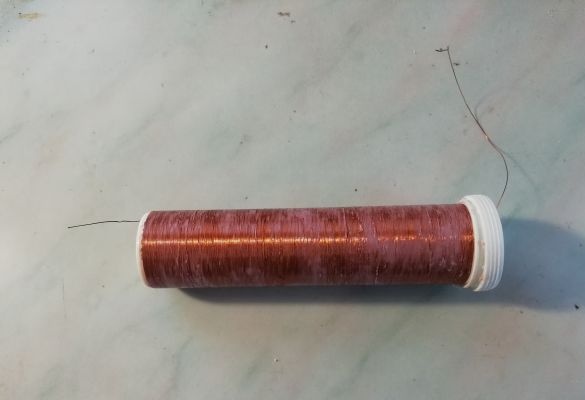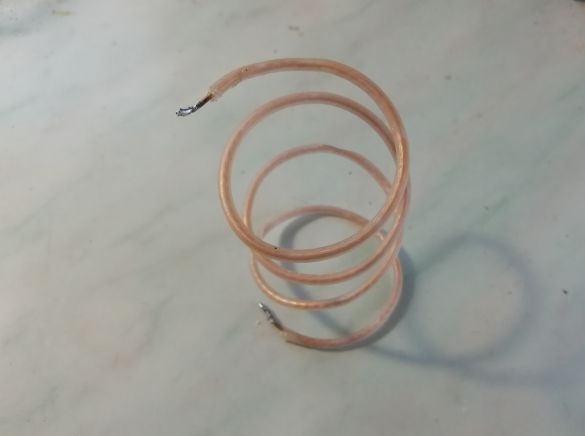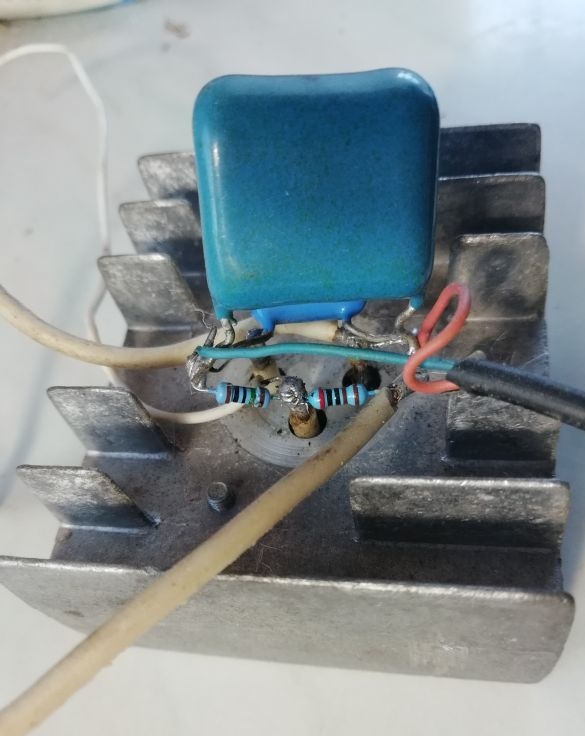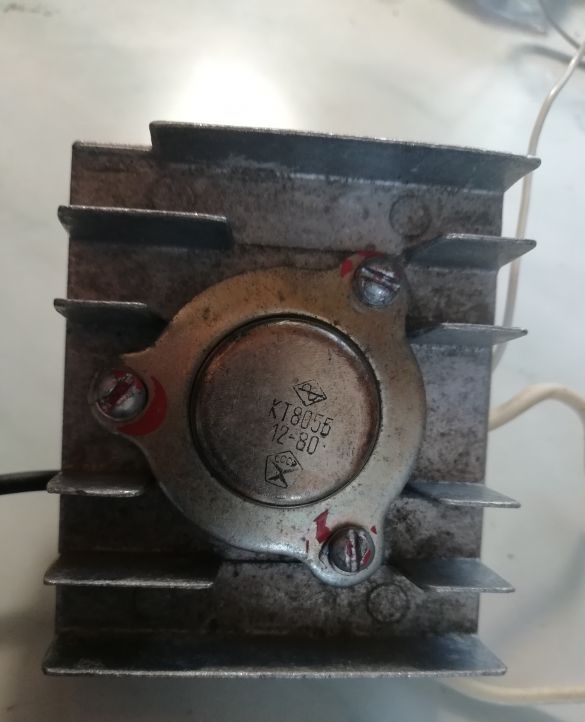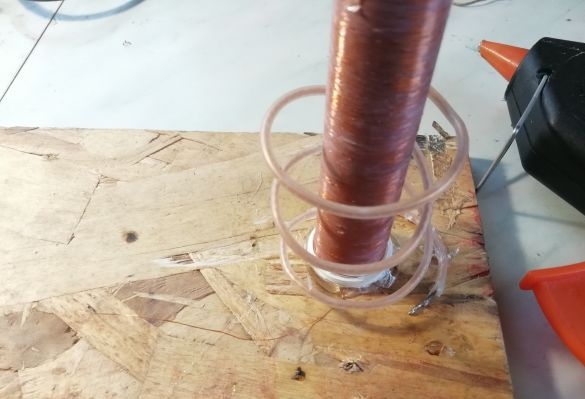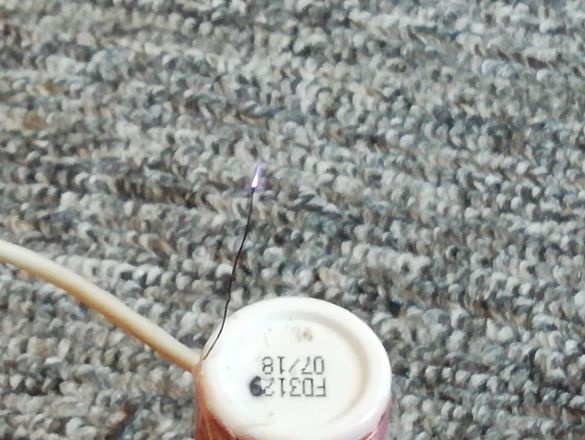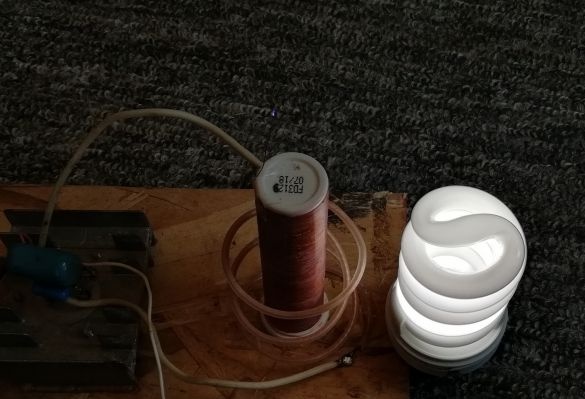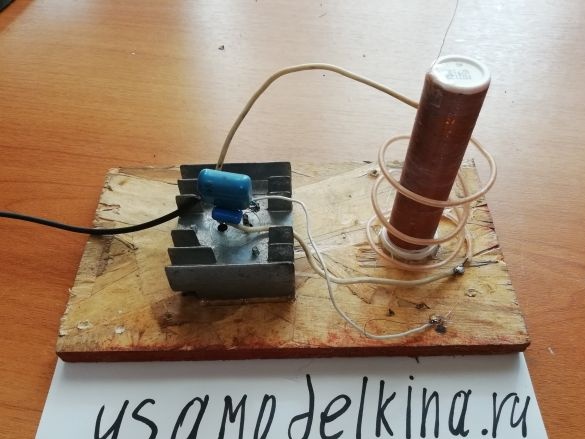Tesla Mini Coil
A device invented by Nikola Tesla and bearing his name. It is a resonant transformer producing high voltage high frequency.
So, what do we need:
- capacitor 0.1mf 400V
- 2.2 kΩ resistor 150 Ohm;
- transistor KT805
- a tube 10 cm long and 3 cm in diameter;
- 12V power supply
- copper wire with a cross section of 0.3 mm
- wire with a diameter of 2..5 mm;
- glue gun;
- a piece of plywood;
- soldering iron;
- wires
We wind the copper wire onto the tube, stepping back a bit from the edges, you can fix the wire; you can wind 1000 turns with tape, then you can coat the coil with varnish.
We wind the secondary winding with a wire of 2-5 mm 3-5 turns, the winding should not touch the primary winding.
We assemble a circuit of 4 components KT805 transistor and two resistors on 2.2Kom and 150 Ohm capacitor 0.1mf 400V
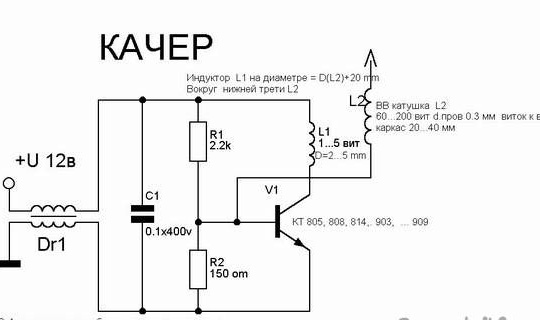
Now glue the coil to the plywood together with the secondary winding and the transistor and solder it to the windings as shown in the diagram.
Tesla mini coil is ready to connect to it 12V should appear an electric arc of half a centimeter.



